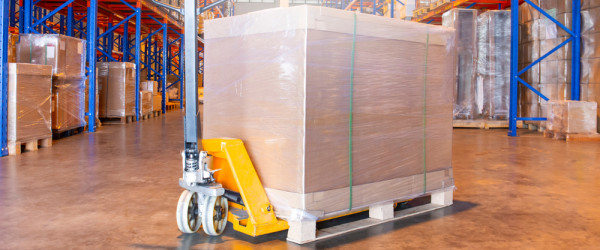In another post, we talked about how to box up small amounts of freight for shipments. Today, we’re going to talk about shipping larger amounts on pallets.
Combining boxes onto one pallet, rather than shipping them individually, reduces the chances for damage to the contents. Think of it as packing everything snugly together, giving it less opportunity for bumping and bruising.
Your goal when you ship anything, whether you’re in Salt Lake City, Denver, Boise, or another Rocky Mountain city, is for it to arrive safely and as quickly as possible. The bulk of that responsibility lies with your courier, but there are things you can do as well to help make the process smoother.
Choose a reputable source for pallets.
Pallets are definitely not all the same. They can be different sizes, and each is intended to bear a predetermined amount of weight. We recommend that you get pallets only from an established, trusted company. Finding out too late that the pallet does not conform to the size and weight specifications that you thought it would can be a costly mistake.
Further, some pallets are chemically treated and not safe for all uses. For this reason, and because the pallets could be unsafe or dirty, we recommend you never reuse pallets, unless they are your own. And even then, before each use you should certify the structural integrity of the pallet and be sure there are no cracked boards or protruding nails.
Follow weight and height guidelines.
After you pack your freight in boxes following best packing practices, stack them evenly on the pallet, keeping the boxes as close together as possible and filling as much of the pallet space as possible, without overhang.
Remember to put your heaviest items on the bottom, and if you don’t have enough boxes for a complete top layer, avoid stacking them pyramid fashion.
Consider using corner boards.
These L-shaped strips of heavy, recycled paper help keep your boxes aligned as well as provide extra protection against denting, crushing, and damage.
Wrap the pallet securely.
To ensure stability with your freight, you must wrap pallets in clear plastic. This plastic comes in bags or rolls in a variety of sizes and lengths, so you can choose the best one for you. With heavy loads, it’s better to twist while wrapping. You may also want to add plastic or metal bands for extra security.
Western Peaks Logistics provides palletizing services to our customers in Utah, Colorado, Idaho, and throughout the Rocky Mountain West. Learning to stack and wrap pallets properly—especially if you don’t have an automated palletizer—takes time, effort, and practice.
Let our team pack and palletize your freight so that it arrives safely at its destination. Call us today to learn more about our service and rates.

